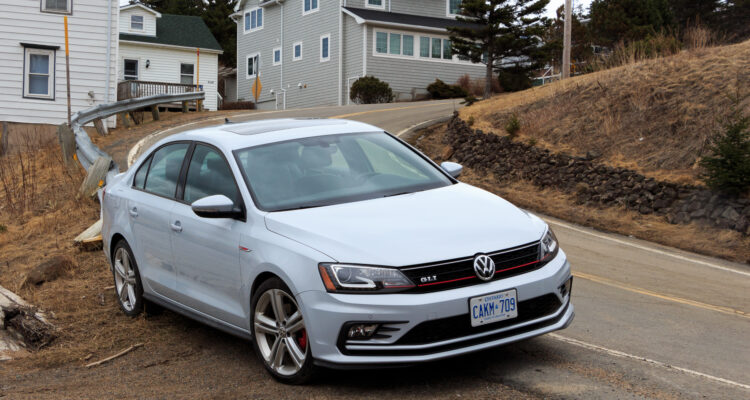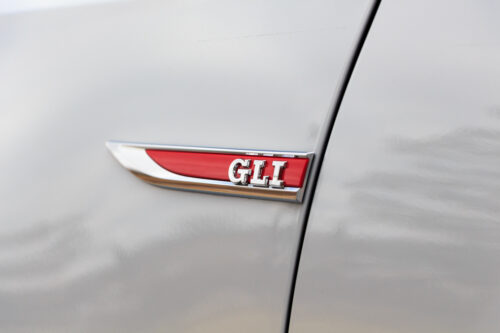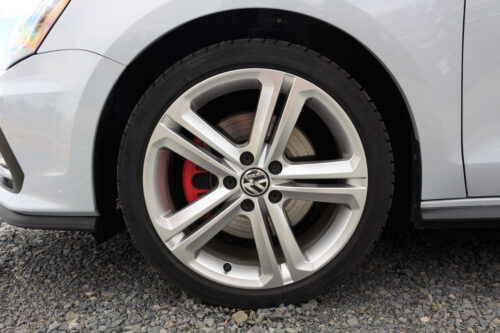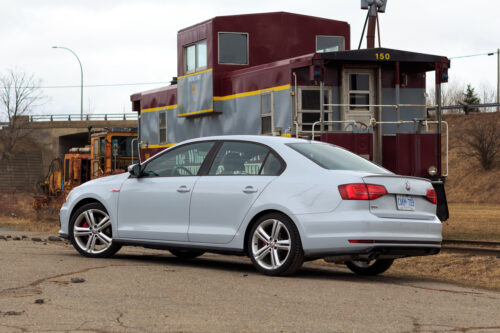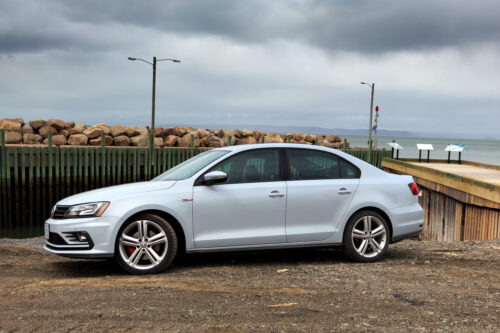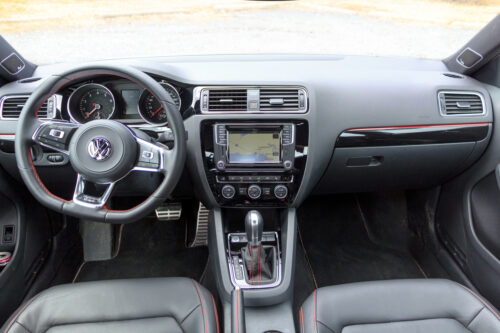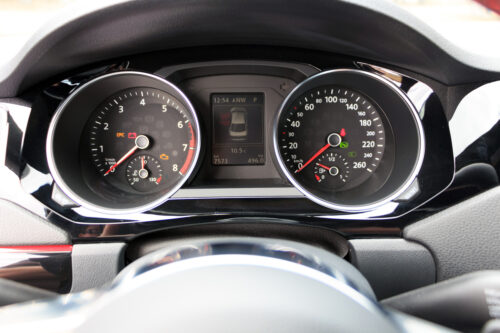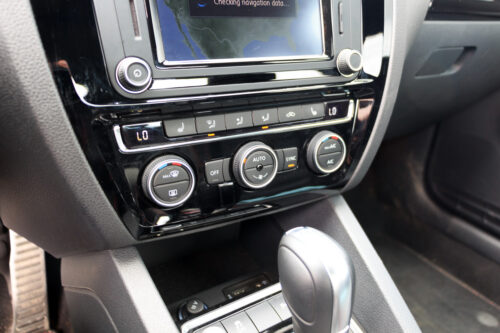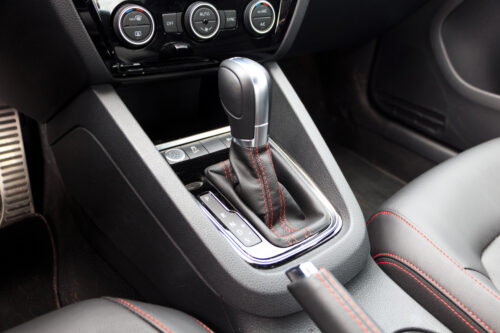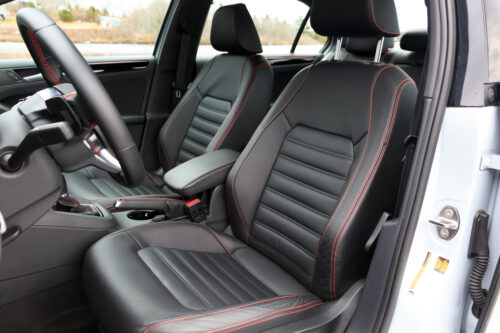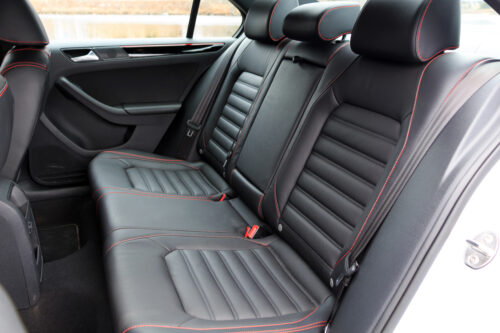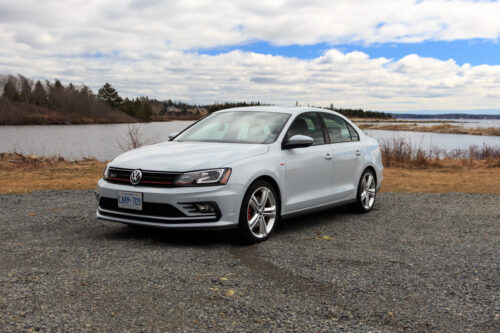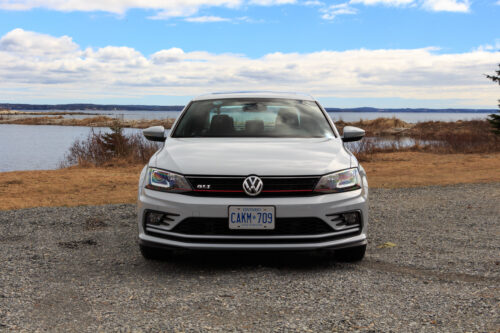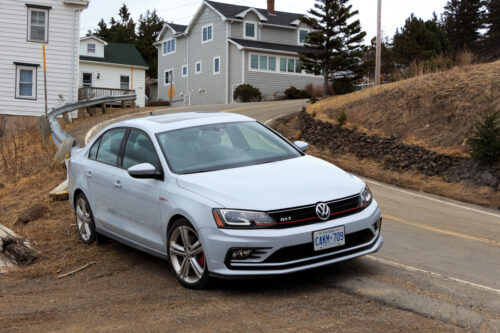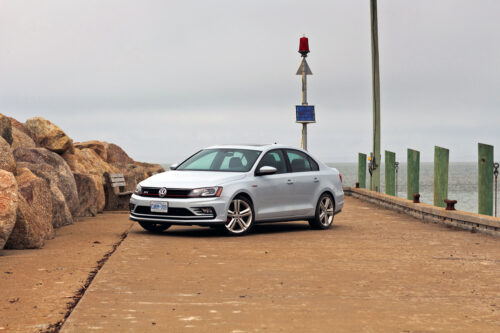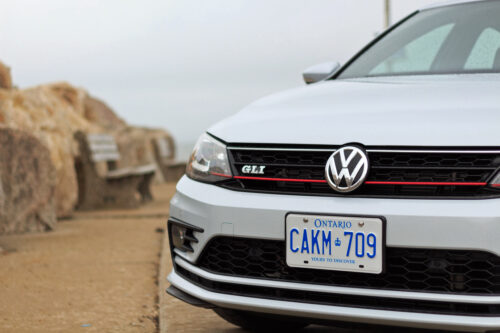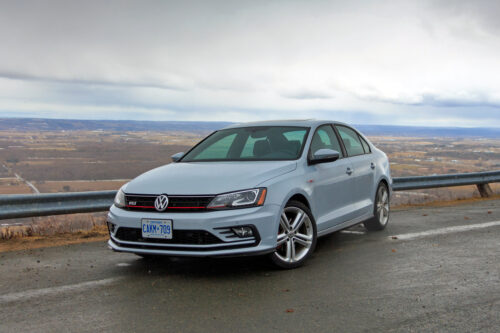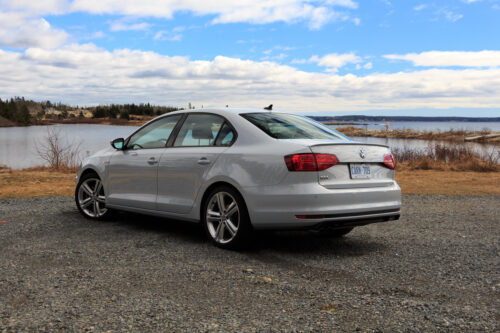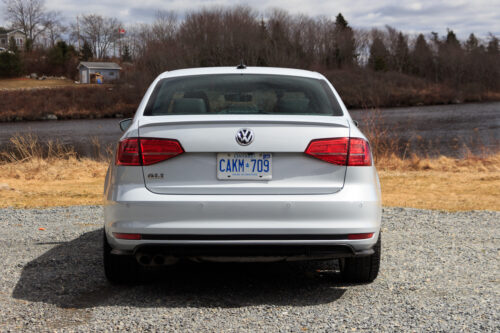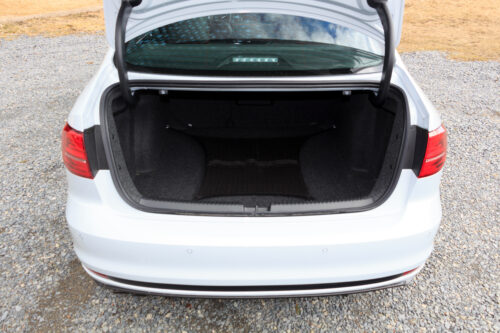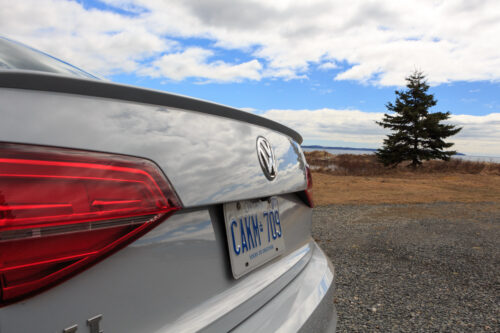This Volkswagen Jetta GLI talks to me.
There are three branches on the high performance Volkswagen tree these days. In North America, at least. There’s the top branch Golf R, and right below that is the Golf GTI. The bottom branch is the Jetta GLI. But I’m here to tell you that the lowest branch, and the slowest of the trio, is the one you want.
It’s not that the Golf R and GTI are bad cars, or slow in any shape of the word. In fact, that’s the problem with them. The Golfs, especially the all-wheel drive R are simply too fast to be fun in the real world.
I’ve spent a lot of time behind the wheel of the Golf R, and I’m shocked at just how fast that reasonably priced hatchback can go. It is capable of speeds that would get my license taken away and see me thrown under the jail. And that’s the problem. When you’re driving it like a reasonable person, somebody who wants to still be driving next week, it feels numb. The limits are incredibly high, but until you get close to those limits, the handling is numb. It’s fast, but it’s boring. You dive into a corner as fast as you want and it just turns in and sticks. It’s very capable, but it’s never fun. And while I’m not sure about you, I’ve always thought that driving should be fun.
So here I sit behind the wheel of a Jetta GLI. Even better, this car still has snow tires on it. On a 12 degree day. If that sounds like a recipe for a day of squealing tires and understeer, then you’re half right. About the squealing tires part. The understeer part is a different matter.
Getting into the GLI, after sitting in any Golf model, is a bit bizarre. Everything is in the same place, and it looks the same – at least at first glance – but something just isn’t right. Everything looks like it does in the Golf, but it looks cheaper. Like somebody built a knockoff Golf.
The cost cutting is apparent if you’re really looking. The dash is definitely not as nice, same with the trim on the center console. Plus the LED accent lighting in the doors is missing. But next to most cars in this range, it still looks great. It’s just that the Golf is that much nicer.
That cost-cutting extends to the engine too. It’s a 2.0L turbo-four, same as the GTI, but in this installation, it’s missing variable valve timing along with a big chunk of midrange torque. On the active safety side, the adaptive cruise control, emergency braking, park assist, and lane keeping that are available on the GTI are missing from the GLI.
I said that the GLI was the best driver’s car of the trio, but now I’m talking about interior trim and trunk size. So what makes the GLI a better driver’s car?
The GLI’s suspension is a compromise compared with the Golfs. But again, that’s a good thing. See, it doesn’t have the drive modes that the Golfs get. You get one suspension setting and one steering setting. Sure, having a track mode is great…if you’re on a track. The rest of the time, you’re as likely as not to find yourself in the wrong mode. All the time. Since every mode is more focused, you’re less likely to be happy if the road changes. Race steering is too heavy when you’re parking. Comfort mode is great on the bumps, but then the car is rolling and floating when the road gets fun again. With just one suspension mode, you’re always in the right mode. If the engineers have done a good job. On the Jetta, they have.
It’s the lower grip of the cheaper suspension, accentuated by the tires, that makes the GLI good. I won’t call them low-performance tires, because they were excellent in the snow, but the winter tires I’m on, and the all-seasons that come standard, aren’t exactly the sporty summer-only rubber the GTI and R get. The suspension allows a little bit more roll than its siblings do in their sportier modes. It still corners acceptably flat, but the extra roll means that you use up all of the grip of the tires a little bit sooner. The grip goes away slowly and progressively, and it’s easy to feel through the wheel when you get close to the limit.
The suspension softness is welcome on the windy roads in much of the country that haven’t been repaved since the turn of the century. It does a better job of letting you keep cornering quickly, and actually lets you go a little bit faster since you don’t need to worry about large bumps unsettling the chassis.
The big and siped tread blocks of the snow tires squirm and move. All of that is getting sent back up the steering column to your fingers, and if you really push it, then to your ears. It makes it easy to know where the limit is, and if you should keep going or if you should back off. You can feel grip peak and start to wane and can use the throttle to push the nose out further or bring it back in line. You need to have a careful touch on that throttle too; if you get a little too heavy with your right foot, then the inside tire will break traction and spin. It’s in stark contrast to the all-wheel drive R, where using the gas pedal like an on-off switch has little consequence to anything but your speedometer.
So the GLI is more fun because it talks to you. You can feel through your hands and feet how close you are to the limits of grip. It’s not slow car fast because it’s still quick, but it’s definitely not fast car slow, which is what the GTI and R suffer from. There’s just one thing that lets down the driving experience in the GLI. My test car is a dual-clutch transmission.
I know that the DSG six-speed is faster and more efficient than a manual. I know that in 90 percent of driving that the DSG is better, especially in town or in traffic. And in this application, it is lightning fast to shift up or down. But there’s something about the feeling of pushing in that third pedal and driving a shifter home that is immensely satisfying when you’re pushing hard. It’s something that DSG can’t match. Maybe instead of an up/down mode, somebody needs to invent a fake shift gate for dual-clutch automatics. Until that happens, I’ll take the three-pedal option. And thanks for making it available.
2017 Volkswagen Jetta GLI
Price as tested: $36,395.00
Freight: $1,645.00
Configuration: front engine/front-wheel drive
Engine/transmission: 2.0L Turbocharged four cylinder/six-speed dual-clutch automatic
Power/torque: 210 hp/207 lb-ft
Fuel (capacity): 55L
Combined fuel economy ratings (L/100 km): 8.7
Observed fuel economy (L/100 km): 7.6
Warranties: 4 years, 80,000 km
Competitors: Honda Civic Si, Hyundai Elantra Sport, Subaru WRX, Ford Focus ST
Related link:
Volkswagen Canada
Jalopnik



